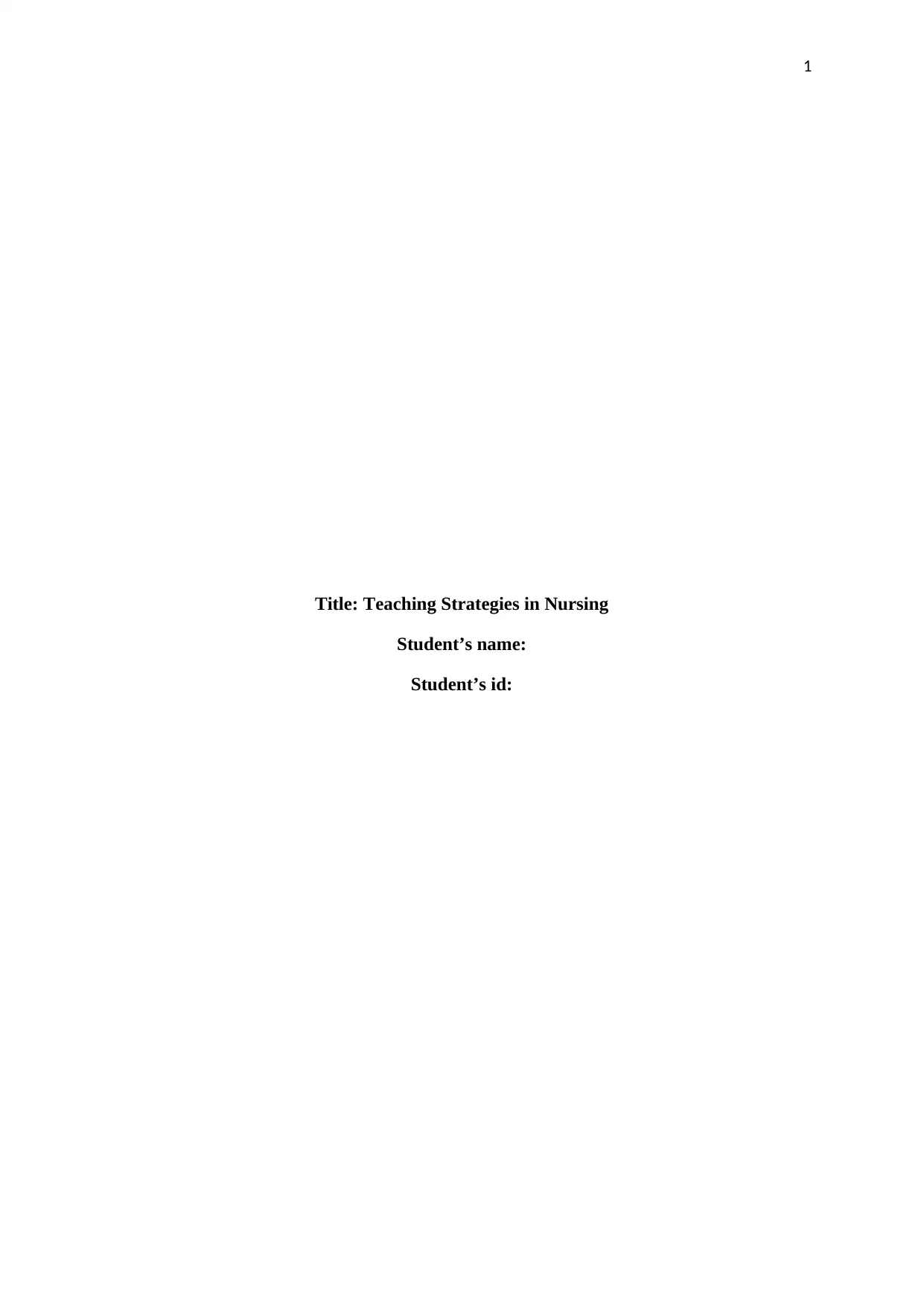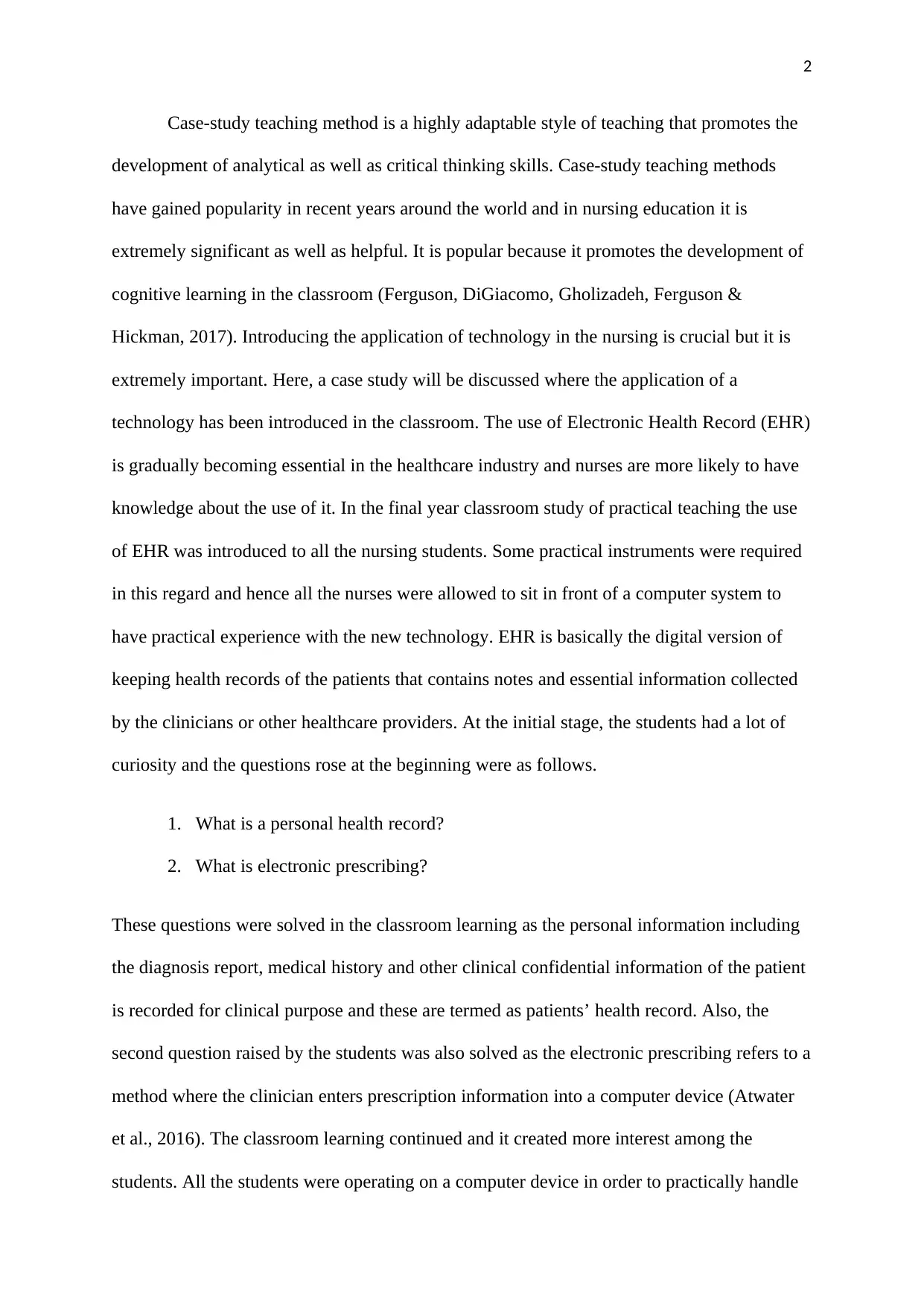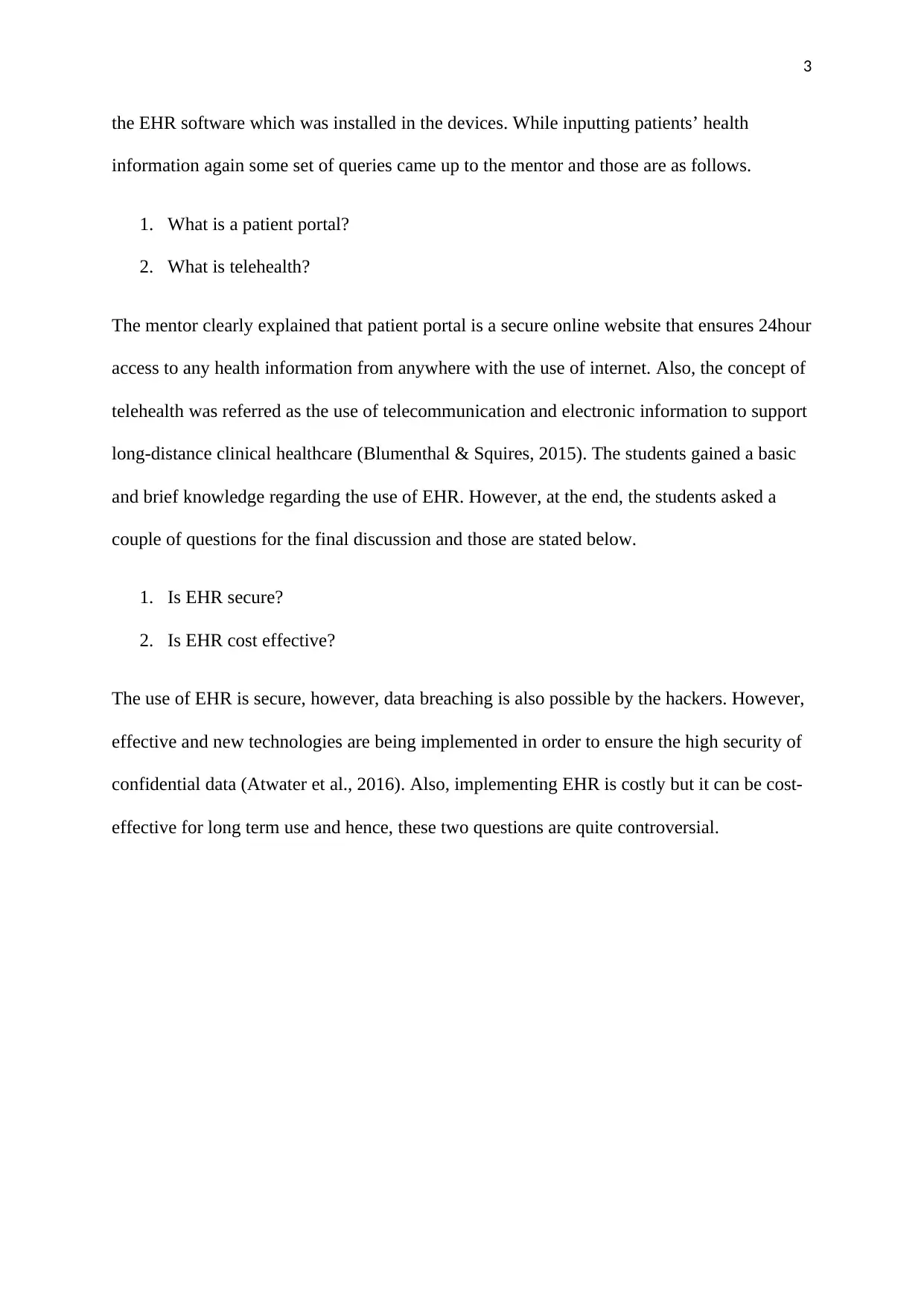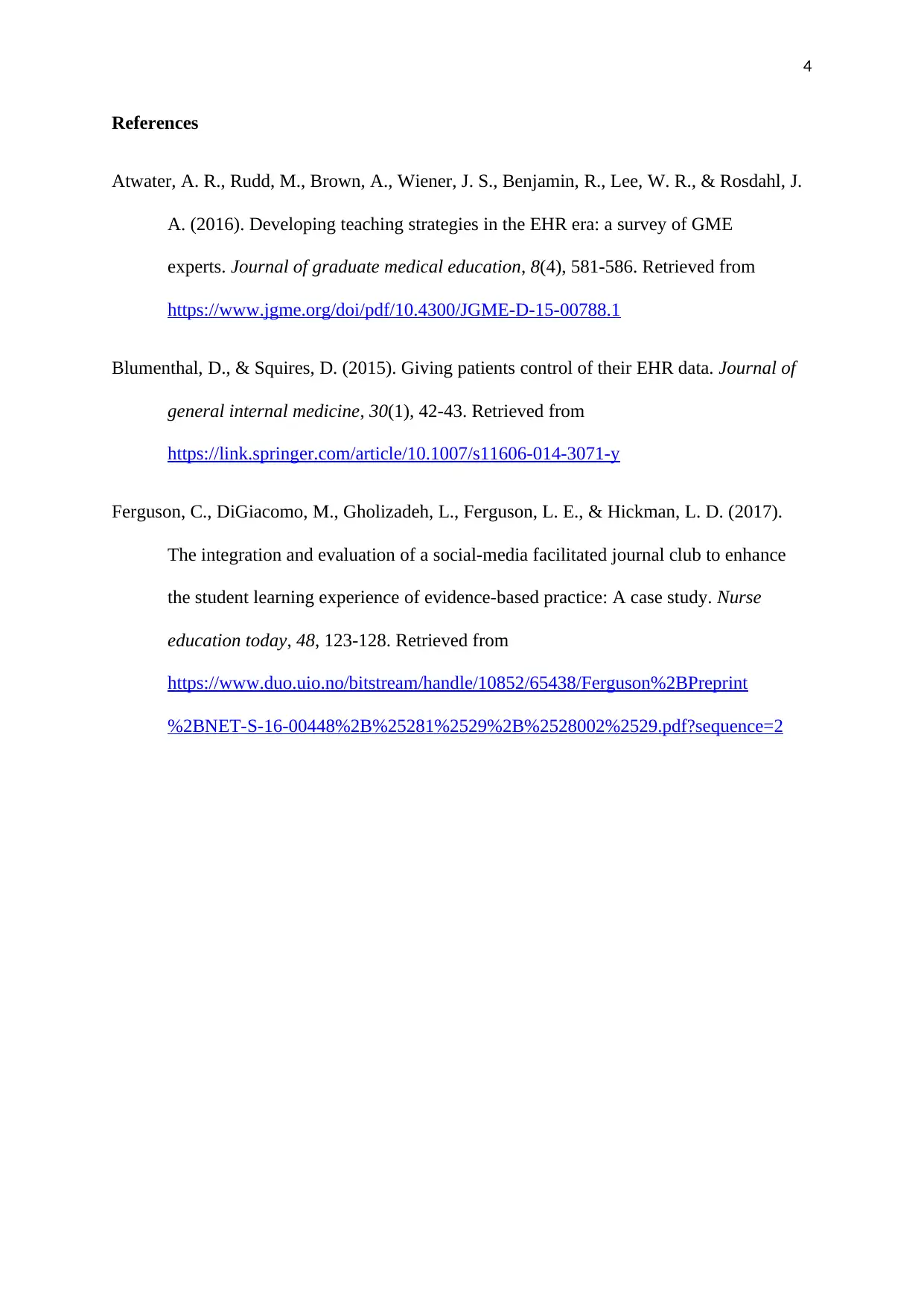Teaching Strategies in Nursing: A Case Study on the Use of Electronic Health Record
VerifiedAdded on 2022/11/07
|4
|789
|383
AI Summary
This case study discusses the use of Electronic Health Record (EHR) in nursing education and its significance in promoting cognitive learning. It also covers the basic knowledge gained by nursing students regarding EHR and its practical application in the classroom.
Contribute Materials
Your contribution can guide someone’s learning journey. Share your
documents today.
1 out of 4










![[object Object]](/_next/static/media/star-bottom.7253800d.svg)